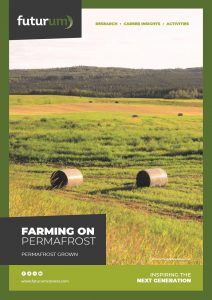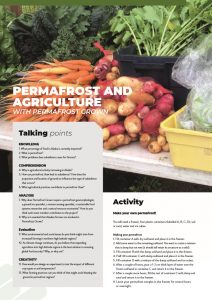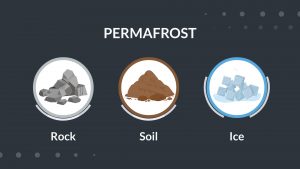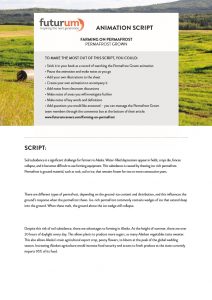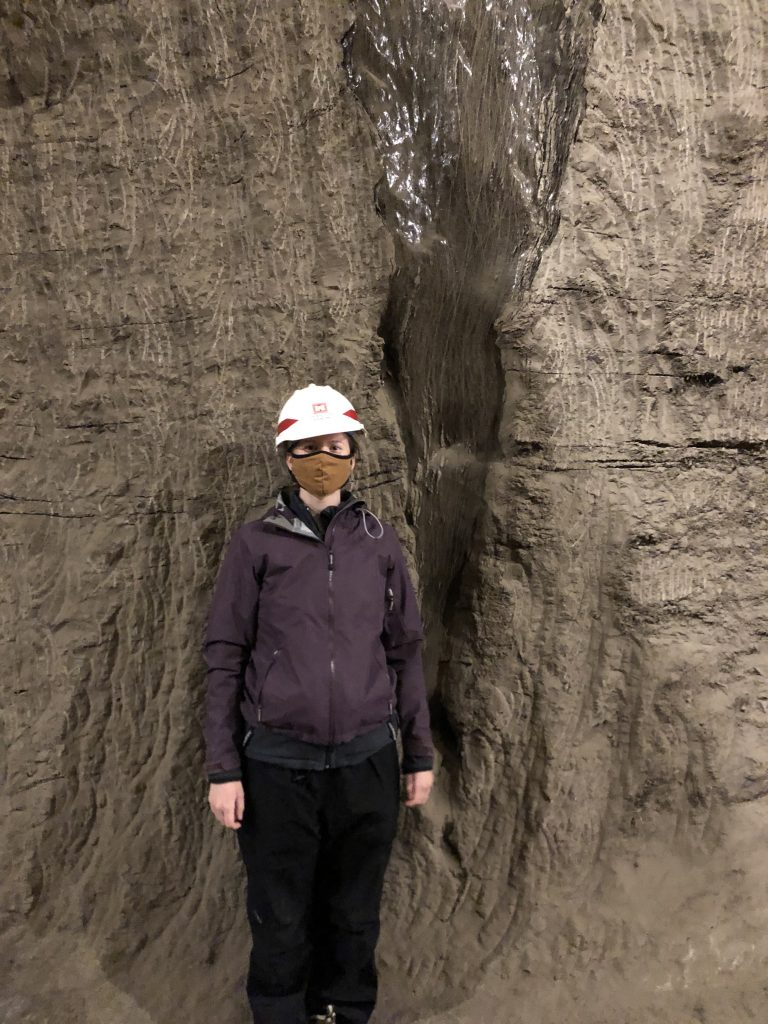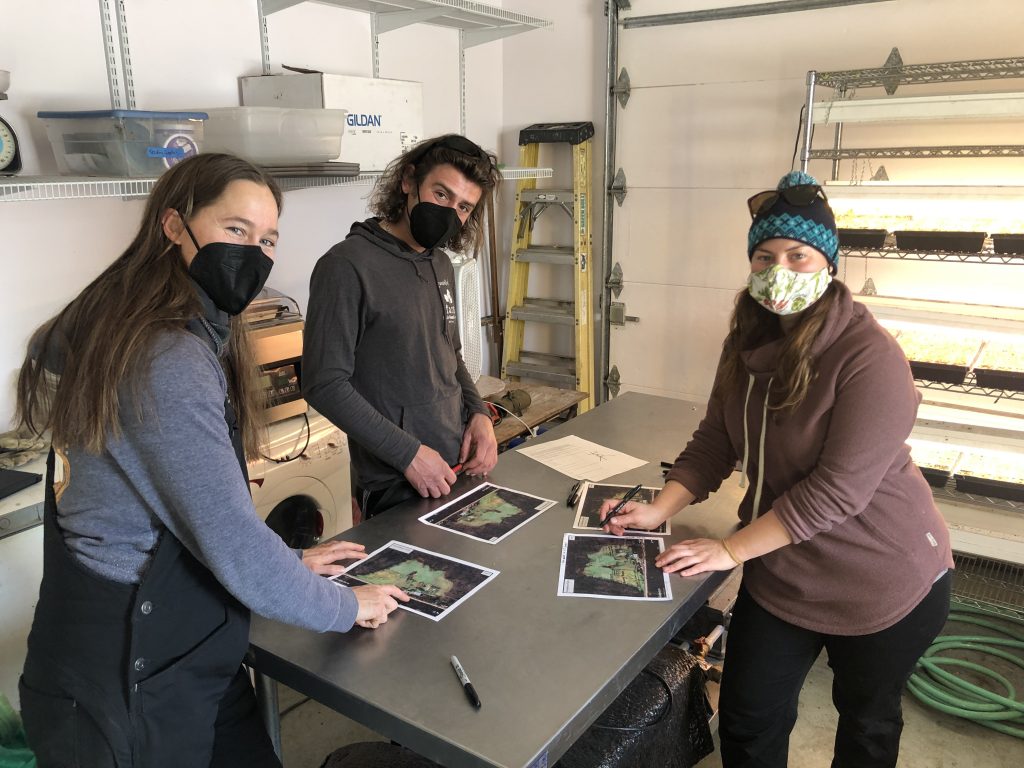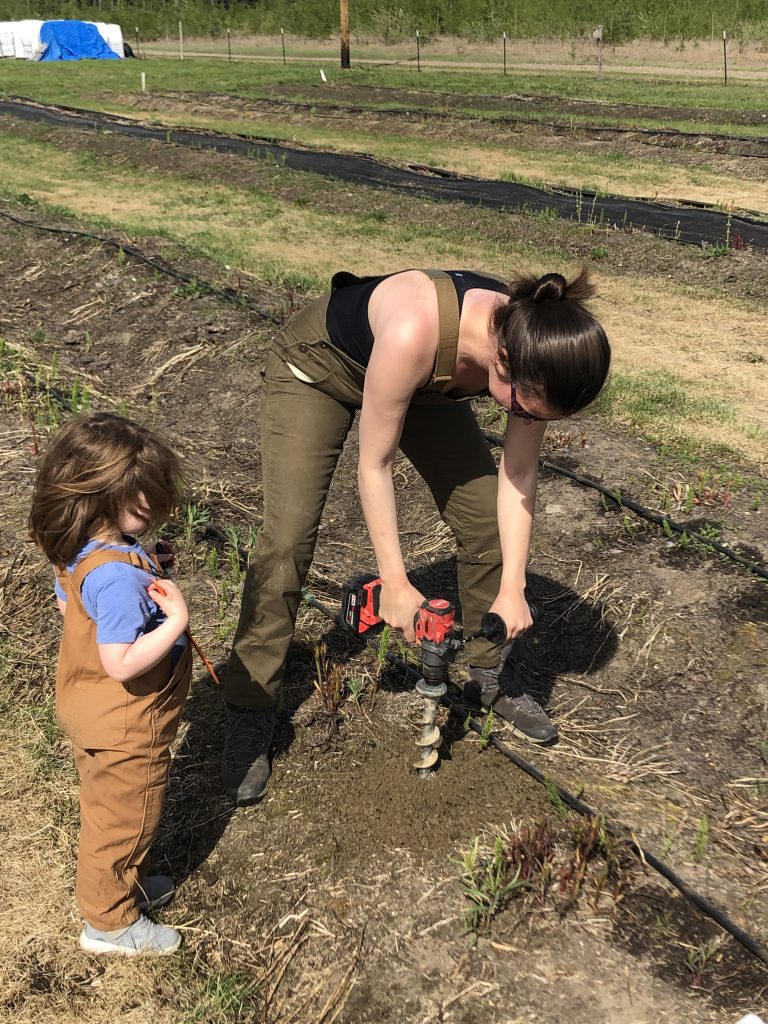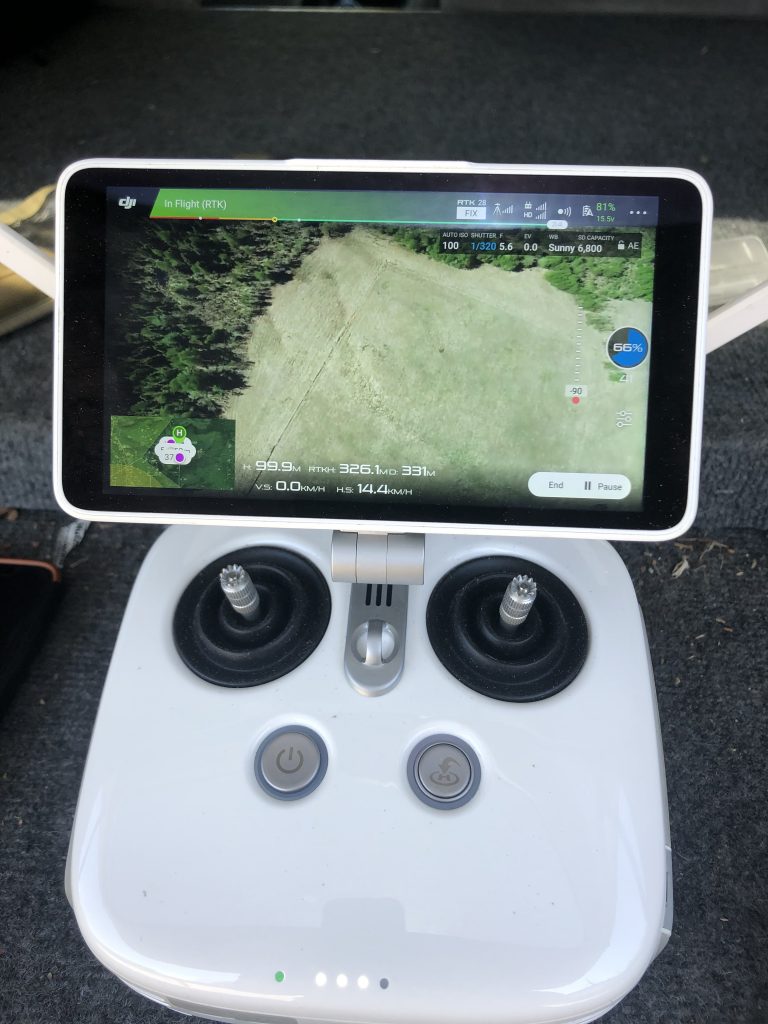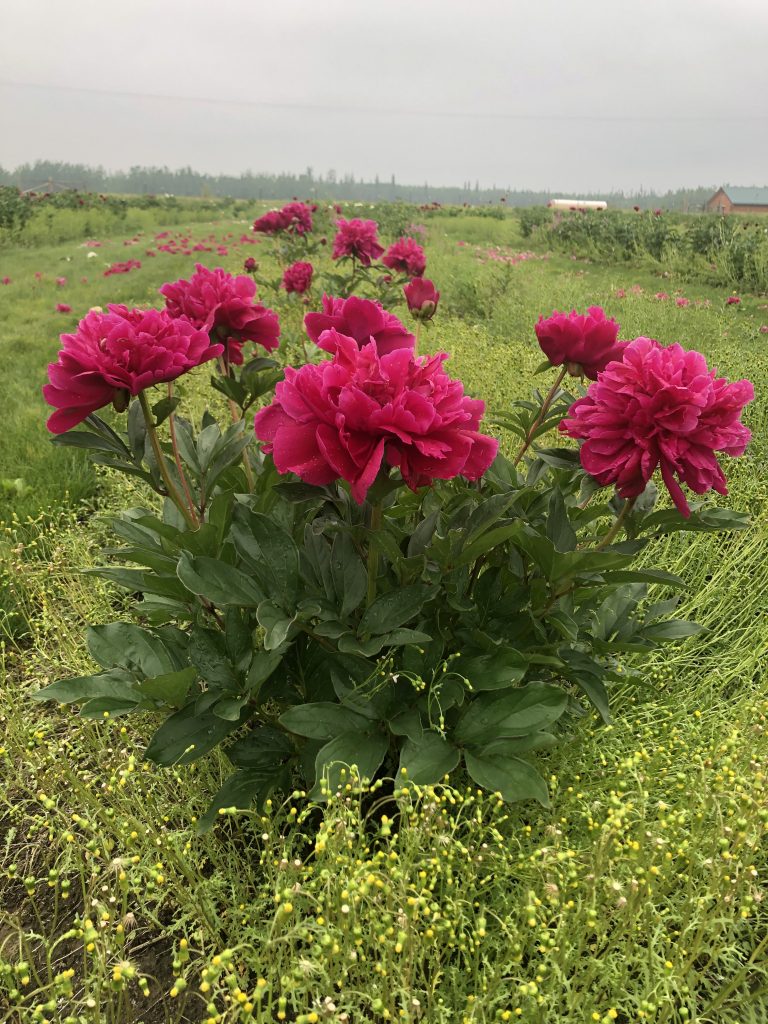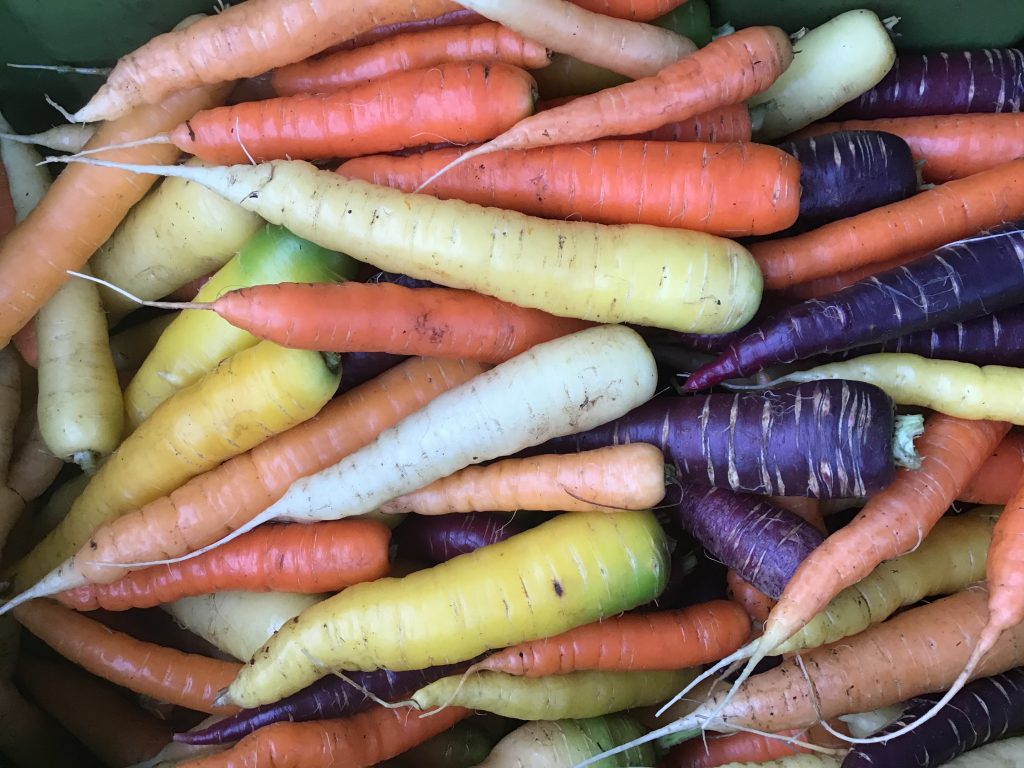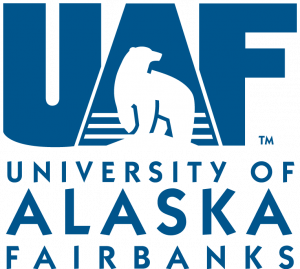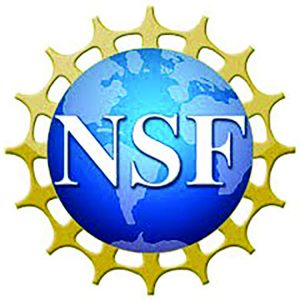Farming on permafrost
Climate change is creating new opportunities for agriculture, by providing longer and warmer growing seasons, and thawing frozen ground. But farmers in permafrost regions face many challenges, including subsidence in their fields. Dr Melissa Ward Jones, a permafrost geomorphologist at the University of Alaska Fairbanks, USA, has established Permafrost Grown, a research project investigating the interactions between permafrost and agriculture.
TALK LIKE A NORTHERN HIGH LATITUDE RESEARCHER
Boreal — the climatic region just south of the Arctic, characterised by cold temperatures and conifer forests
Food security — reliable access to healthy, affordable foods that meet dietary needs
Geomorphology — the study of how landforms and landscapes form and evolve
Ground ice — ice below the ground surface
Mulch — any material humans use to cover soil to insulate and/or enrich it
Northern high latitude — regions above ~60°N
Permafrost — ground material (e.g., rock, soil, ice) that remains at or below 0 °C for at least two consecutive years
Thaw subsidence — the sinking of land due to the melting of ground ice
Topsoil — the upper layer of soil where most biological activity happens
As the world warms, the way we farm will have to change. In some parts of the world, higher temperatures and extreme weather conditions will reduce the amount of food that can be grown, so how will we feed everybody? Some people are looking to the north, where areas previously unsuitable for growing food are becoming available due to warming trends, creating increased agricultural opportunities.
When you think of Alaska, you might picture snow-covered rocky peaks, glaciers and bears roaming across great wildernesses. Here, for more than half the year, it is too cold and dark to grow crops, so it does not seem like the most inviting place to start a farm. However, temperatures in the USA’s most northern state are on the rise, and this is being accompanied by an increase in agricultural activity. As permafrost thaws, people are moving north to plant vegetables, cereals and flowers in the newly defrosted soil.
At the University of Alaska Fairbanks, Dr Melissa Ward Jones is digging into the details to uncover what impacts permafrost has on agriculture, and what impacts agriculture has on permafrost. She is leading an NSF-funded project called Permafrost Grown, which aims to determine what it will take to successfully farm in this northern high latitude region.
Why do farmers in Alaska need to watch out for collapsing ground?
Permafrost is defined as ground material (e.g., rock, soil, ice) that remains at or below 0 °C for two or more consecutive years. There are many types of permafrost, depending on the proportion and location of the ground ice it contains, and this influences the ground’s response when the permafrost thaws.
If permafrost contains no ground ice, then when the ground thaws, the surface is likely to be unaffected. However, when ice-rich permafrost thaws, the ground ice will melt, changing from a solid to a liquid. The unfrozen ground will lose the volume and structure originally provided by the ice, causing the ground surface to collapse or subside. If ice is evenly distributed through the permafrost as a continuous layer, when it melts, subsidence is likely to be relatively even as the whole ground surface will sink. But permafrost commonly contains ice wedges – wedges of ice that extend deep into the ground but are not laterally continuous. When these melt, subsidence will be much greater over the ice wedges than over the surrounding ground, meaning a flat field can become riddled with mounds, depressions and ponds, damaging tractors and causing them to get stuck in the mud.
Subsidence is a serious problem for farmers in permafrost regions as fertile topsoil is lost and areas may become waterlogged. “Subsidence also damages farm infrastructure, such as fences and buildings, while making it difficult or impossible to use farm equipment in fields that are no longer level,” says Melissa.
Despite the risks of subsidence, the promise of warmer summers is drawing people to northern high latitude farming. Currently, Alaska only produces about 5% of its own food, meaning it has poor food security. “There are limited options for importing food as some villages are only accessible by boat or plane,” says Melissa. “This means shelves are often empty of certain foods, particularly in winter.” For the 700,000 people who live in Alaska, increased agriculture comes with the hope of fresher food and more reliable supplies.
Do Alaskan vegetables taste different?
While the average growing season in Fairbanks is only 110 days long, at the height of summer there are over 22 hours of daylight every day. This is ideal for many fruits and vegetables, as they can keep growing, photosynthesising and producing sugars for longer. “This means carrots grown in Alaska taste sweeter!” says Melissa.
But care must be taken to choose the right plant varieties for northern farming, as long daylight hours can make some crops, like spinach, more likely to ‘bolt’. Instead of putting energy into the edible portions, the plant puts energy into seed production which can reduce edibility and flavour.
Could agriculture increase permafrost thaw?
Another challenge of farming in permafrost regions is to ensure agriculture does not accelerate thawing. Much of Alaska is covered by boreal forests. These provide shade in summer and catch and hold snow in winter, allowing cold air to penetrate the ground. When trees are cleared for fields, there is no longer any summer shade and, in winter, snow on the ground will act as a blanket, insulating it and causing warmer ground temperatures. These cause the rate of thaw to increase. Farmers also warm the soil to make it more favourable for crop growth, by tilling the soil and applying mulches, which may contribute to permafrost thaw.
What is Permafrost Grown investigating?
Melissa, a permafrost geomorphologist, is teaming up with local farmers and academics from different fields to tackle the challenges of agriculture in permafrost regions. These include Dr Mikhail (Misha) Kanevskiy, a permafrost scientist, Dr Benjamin Jones, a remote sensing specialist, Glenna Gannon, a sustainable food systems researcher, and Dr Tobias (Toby) Schwoerer, a natural resource economist, for a truly transdisciplinary approach. The most important members of the research team are the farmers themselves. “We are collaborating with farmers because they know the problems, the management strategies they have tried and the unique characteristics of their fields,” says Melissa.
To assess permafrost conditions, the team conducts ground penetrating radar (GPR) surveys and collects ground cores. “GPR uses radar pulses to image the subsurface, so we can identify areas with ground ice,” explains Melissa. “The cores validate the results of the GPR surveys and allow us to determine ground ice content and soil properties.” The team also uses drones to take images of fields, enabling researchers to measure and monitor subsidence, snow depth and plant health.
The team is conducting agricultural experiments on farms to test the thermal impacts of different mulches and the suitability of different crop species and management practices. “Preliminary results show that certain mulches can elevate temperatures below 1 m depth in the soil,” says Melissa, highlighting that farming practices are contributing to ground warming. She hypothesises that larger, leafier plants, such as squash and cabbage, may help keep the ground cool in a similar way to the original boreal forests, so the team is growing different crops to test their thermal impact.
To determine the socioeconomic impacts of permafrost-agriculture interactions, the team is interviewing farmers to understand their attitudes towards different permafrost mitigation strategies.
The future of Alaskan farming
The unique environment in Alaska means agricultural practices must be adapted for the region, as low latitude farming methods will not succeed at high latitudes. Permafrost Grown aims to better understand the interactions between permafrost and agriculture and to develop best-practice guides for farmers. “These guides will provide a resource for farmers to help identify what type of permafrost they may have in their fields,” says Melissa. “They will then offer suggestions of management strategies to deal with the challenges associated with this permafrost.” With these tools, the dream of fresh, local produce could become a sustainable reality in Alaska.
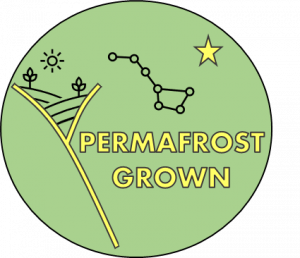 PERMAFROST GROWN
PERMAFROST GROWN
University of Alaska Fairbanks, USA
Fields of research: Permafrost Science, Agricultural Science, Remote Sensing, Sustainable Food Systems, Natural Resource Economics
Research project: Investigating how permafrost affects agriculture and how agriculture affects permafrost in Alaska
Funder: US National Science Foundation (NSF)
ABOUT NORTHERN HIGH LATITUDE RESEARCH
Northern high latitude regions are warming faster than anywhere else on Earth. As climate change continues, it is more important than ever to understand how these regions are impacted. This research involves a range of specialities, many of which are represented in the Permafrost Grown project:
PERMAFROST SCIENCE
There are many aspects of permafrost to study. Misha specialises in ground ice, which involves conducting fieldwork to investigate ground ice distribution in permafrost. He also works in the lab to determine soil properties, such as how much frozen ground compresses during thawing. “Ground ice studies are very important for permafrost studies, as the distribution and amount of ground ice determines the permafrost behaviour during thawing,” he explains.
GEOMORPHOLOGY
Geomorphology is the study of landforms and landscapes, including how they are created and change over time. As such, geomorphology is all around you – in hills, rivers and coasts. Melissa is a permafrost geomorphologist, specialising in Arctic landscapes, but geomorphologists are not restricted to studying Earth. “Because Mars is cold, permafrost environments on Earth are the closest analogies we have for Mars,” she explains. “By understanding how landforms form on Earth, we can learn how they form on Mars, and this is a sub-field of permafrost geomorphology.”
REMOTE SENSING
Remote sensing involves making measurements of Earth (or other planets) from a distance. Cameras and sensors mounted on drones, planes or satellites capture images of the Earth’s surface, and by taking repeat measurements and comparing the results, scientists can detect how landscapes are changing. Remote sensing is, therefore, a powerful tool for mapping and monitoring environmental changes.
Benjamin is using remote sensing to study the effects of cultivation on permafrost stability and the response of crops to changes in permafrost. “Pursuing a career in remote sensing offers a diverse portfolio for you to explore anything on Earth or in space,” he says. “There is a wide range of applications for remote sensing specialists, so there will always be jobs in the field.” Remote sensing technology is rapidly advancing, providing new techniques for observing the Earth’s land, atmosphere, oceans and icecaps.
SUSTAINABLE FOOD SYSTEMS
A food system is everything that needs to happen to put food on the table. This includes farming, harvesting, processing, marketing, distributing, consuming and disposing of food. “A food system is influenced by political, social, economic and environmental contexts,” says Glenna, whose role in Permafrost Grown is to investigate how permafrost environments can feed people in the future.
With an ever-growing population, global food security is becoming a pressing issue and sustainable food systems are key to addressing this. We need to find ways to feed everyone while also protecting biodiversity. With so many components to our complex food systems, there are endless career opportunities in the field. “A career in food systems could focus on the economics of food production, large-scale composting, plant breeding for climate resilient crops or policymaking on hunger relief,” says Glenna.
NATURAL RESOURCE ECONOMICS
Reference
https://doi.org/10.33424/FUTURUM404
Natural resource economics involves the interactions between natural and human (social and economic) systems. Researchers collect data from people and companies, compare them to measurements of natural systems to understand they are connected, then communicate with policymakers about what impact their decisions will have on the economy and the environment. “We want to understand human behaviour so that we can make more sustainable decisions for a better future,” says Toby. “If you are curious about how human behaviour and policy affect the outcomes for nature, then natural resource economics can give you skills to help make the world a better place.”
Pathway from school to northern high latitude research
• Permafrost science is a branch of Earth science that requires knowledge of geology, glaciology, geomorphology and climatology.
• If you are interested in geomorphology, consider studying physical geography, geology or Earth science at university.
• There are many paths to becoming a remote sensing specialist, including degrees in geography, physical sciences, mathematics or computer science. Whatever you study, ensure you take as many courses in geographical information systems (GIS) as you can.
• While some universities offer degrees specifically in sustainable food systems, the skills and knowledge you learn in almost any degree can be applied to the field.
• A range of subjects could lead to a career in natural resource economics, including mathematics, economics, data science, ecology, policy and conservation science.
Meet the team
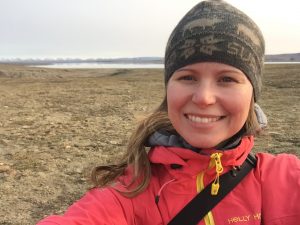
Dr Melissa Ward Jones
Research Assistant Professor, Institute of Northern Engineering, University of Alaska Fairbanks, USA
Field of research: Permafrost Geomorphology
I spent a lot of time outside as a child, and my family often went camping. Doing research projects was my absolute favourite task in school.
I became a geomorphologist by accident! I was inspired to become a scientist by a children’s TV show, Kratts’ Creatures, so I initially pursued biology. But at university, I discovered biology wasn’t for me as I didn’t enjoy the molecular and cellular biology classes. Instead, I liked the look of physical geography classes and so switched subject. While studying geography, I met my future master’s and doctoral supervisor, who told us he conducted his research outside. As I enjoyed being outside, I pursued graduate studies with him. He happened to be a permafrost geomorphologist, and so I discovered that I, too, loved the subject!
The best thing about being a permafrost geomorphologist is being outside and the flexibility of the subject area. Because everything interacts with landscapes, the possibilities for research projects are endless.
All the travel and adventures have been a real highlight of my career. I have been all over the Arctic, travelling by small aircraft, helicopters and snow machines, staying in incredibly beautiful places and seeing all sorts of wildlife. These places are very remote, so there is often no running water, electricity, phone signal or internet.
Melissa’s top tip
Get involved in extra-curricular activities and say yes to opportunities, even if they don’t quite fit with what you are studying. At university, I helped organise a student-led sustainability conference. This taught me many skills, such as fundraising, budget management, recruiting and managing volunteers, and working with an interdisciplinary team. I didn’t realise it at the time, but this experience is benefitting me now as I lead the Permafrost Grown project.

Dr Benjamin Jones
Research Assistant Professor, Institute of Northern Engineering, University of Alaska Fairbanks, USA
Fields of research: Remote Sensing, Permafrost Studies
When I was younger, I was interested in outdoor activities and playing sports. Over the years, my interest in sports changed from playing to spectating, but my love of the outdoors has always remained.
When I moved to Alaska in 2005, I found my home. I could combine my love of the outdoors with my career, focusing on integrating field-based research with remote sensing to better understand how the Arctic is changing in response to climate change.
As a remote sensing specialist, I enjoy the diversity of topics that I work on. I am currently working on projects studying the drainage of Arctic lakes, the movement of beavers in Arctic tundra and erosion of Arctic coastlines. To be a good remote sensing specialist, you have to get out into the field to see what the place you are trying to image and classify looks like, which I really enjoy.
Establishing a remote Arctic research station at Teshekpuk Lake, at the northern tip of Alaska, has been a highlight of my career. It has been a labour of love that has opened many opportunities for me and led to many wonderful collaborations and friendships. It’s a great place to return to year after year, to study the effects of climate change on permafrost terrain and the Arctic tundra.
Benjamin’s top tip
Be flexible and don’t pin yourself down to a career without exploring the world. I started college wanting to be an engineer, but quickly realised my passions lie in exploring remote Arctic landscapes.
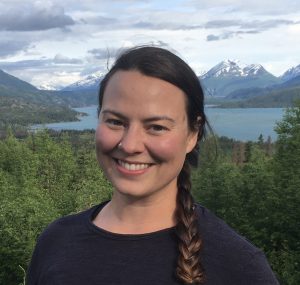
Glenna Gannon
Assistant Professor, Institute for Agriculture, Natural Resources and Extension, University of Alaska Fairbanks, USA
Field of research: Sustainable Food Systems
As a child, I loved being outdoors. I enjoyed walks, canoeing, playing soccer, cross country skiing and observing the natural environment, and I still enjoy these activities today. I’ve also always been creative. I love making art, and I have a dual bachelor’s degree in anthropology and art.
From a young age, my father taught me about harvesting wild plants, both for food and medicine, and this was influential in my choosing to pursue a career in sustainable food systems. I was also inspired by a class in ecological anthropology during my undergraduate studies, which tied together my interests in the environment, ecosystem services and how we as humans fit into and shape the natural systems in which we live.
I’m happy that my career in sustainable food systems allows me to combine my love of being outdoors with my profession. I love that I get to work with people and try lots of interesting and amazingly fresh foods. I grow food as part of my research, and I work with policymakers who influence how food gets to consumers. This combination is highly rewarding and never boring.
I’m proud to have followed my passions. Pursing opportunities and my interests has led me to my current position. I’m also extremely honoured to have been elected to the Alaska Food Policy Council due to the merits of my work.
I’m excited to see how the research I conduct will help shape Alaska’s food systems for the better. My efforts have already led to incremental changes, with producers adopting alternative growing practices, and Alaska Native Tribes now having greater access to funding for food-based programming.
Glenna’s top tips
1. Follow your passions. If there is a class you are interested in, take it, whether it fits your degree requirements or not. A diverse educational background will make you more resilient.
2. It is important to have a creative outlet. Arts can be a fun way to express what you learn in the sciences.
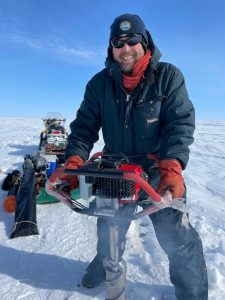
Dr Mikhail (Misha) Kanevskiy
Research Assistant Professor, Institute of Northern Engineering, University of Alaska Fairbanks, USA
Field of research: Permafrost Science
I lived in a very big city when I was younger, but took every opportunity to spend time in nature as I enjoyed outdoor activities such as mountain trekking, spelunking (exploring caves) and rafting. By the age of 17, I had participated in exciting field trips with archaeologists, geomorphologists and glaciologists.
I saw the Arctic for the first time when I was 16. I was trekking in the Polar Urals mountains, and I realised then that I wanted to spend my life doing Arctic fieldwork. I was also inspired by my parents who had studied glaciers in remote Arctic islands, so I went to Moscow State University to study geology.
My work gives me unique opportunities to visit Artic and high-latitude study sites. Of course, the life of a field researcher is not just endless fieldwork! We also process samples and write up our results, which is less exciting but gives me real satisfaction. Our goals are to solve the mysteries of the Arctic, obtain new knowledge and share our findings.
I came to Alaska in 2005, and I think it was one of the best decisions in my life. I have an interesting job where I work on interesting projects with interesting people. After so many years of fieldwork in Siberia, Alaska and Canada, my scientific ambition is to summarise all my findings and write a book about ground ice in Alaska.
Misha’s top tip
When you are young, take opportunities to explore various fields, study various subjects and learn from various teachers. I don’t regret choosing a career path in permafrost when I was very young and sticking with this, but I feel it would have been beneficial if I had explored more opportunities.
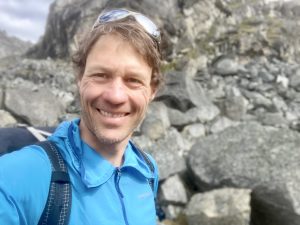
Dr Tobias (Toby) Schwoerer
Research Assistant Professor, International Arctic Research Center, University of Alaska Fairbanks, USA
Field of research: Natural Resource Economics
I have always been curious about the economy and the natural world, especially wild places where nature hasn’t seen human impacts yet. When I was younger, I liked math and wanted to study engineering or geology.
I’m interested in how to bring humanity onto a more sustainable path, so chose to become a natural resource economist. The interactions between humans, natural systems and policymakers are very powerful.
I enjoy working with teams of scientists to analyse complex problems in social and natural systems, such as the issue of invasive species. These projects require team members with a range of knowledge and expertise to work together to provide critical insights for policymakers.
Becoming a research assistant professor and creating my own research programme has been a highlight of my career. It’s not always easy to work in academia as you must constantly compete for funding, but if you thrive in a creative environment, it’s great.
One of my goals in life is to become more self-reliant, by growing and hunting my own food. I am learning a lot from Permafrost Grown about sustainable farming in Alaska, and I am now growing lots of vegetables.
Toby’s top tips
1. Follow your passions.
2. Work hard, and always do your best.
3. Always be kind.
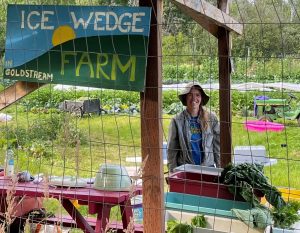
Iris Sutton
Ice Wedge Farm
Goldstream Valley, Alaska, USA
I have a small farm that feeds ~10 families, including my own. I grow everything that can easily be grown in our short summer growing season, including potatoes, carrots, leeks, squashes, beans, lettuce, broccoli, cabbage and herbs. I also raise chickens for eggs and meat, and goats for milk.
I enjoy the community created by farming. I started farming after working on another farm in Fairbanks and realising how valuable it is to have my children with me outside all day and how amazing it is to have lots of fresh veggies. It feels good to do my small part to contribute to local food.
My farm faces many challenges due to permafrost thaw. New holes appear every year, and old holes get deeper. Having a humpy landscape means it’s hard to use a tractor and other equipment. Lower areas on the farm take longer to dry out, so are colder for crops and become infested with weeds.
I’m really excited to help make local food more sustainable. I’m excited by Permafrost Grown because I want to learn about making my farming practices more efficient, and I want to support scientists in their work.
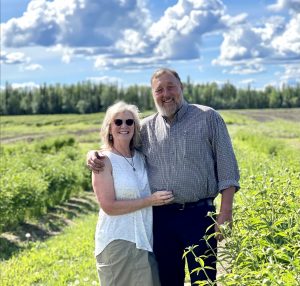
Dr Jill and Dr David Russel
Boreal Peonies
Two Rivers, Alaska, USA
Boreal Peonies is a 40-acre family-owned peony farm that produces exceptionally large cut peonies. We sell these to wholesalers and florists worldwide. Our farm is also a scientific research station that serves as a resource for the Alaskan peony industry, as we conduct experimental trials on peony varieties.
We started the farm in 2012 because it seemed like a fun challenge. We wanted to create a family farm and leave a legacy for our children. At the same time, we are research scientists, so we were really interested in conducting research to develop best practices for the Alaskan peony industry.
We both love making the farm a success and working with our staff, students, other researchers and our adult children. Jill enjoys getting her hands in the dirt and watching the plants grow and develop. She also loves monitoring plant development and collecting and analysing data. Dave most enjoys designing our nutrition and farming practices and new research projects. He loves trying something new and seeing that it actually works!
Due to permafrost thaw, our farm has faced subsidence, pooling water and acidic soils. We also encounter challenges not related to permafrost, mainly the precision required during post-harvesting handling of the flowers to ensure a high-quality product arrives to the customer.
We are excited about Permafrost Grown as it gives us the opportunity to generate information that will help us make better growing decisions on our farm.
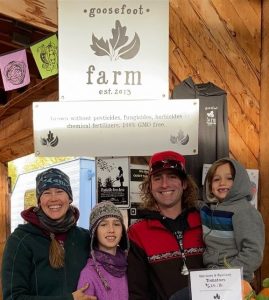
Christine and Brad St. Pierre
Goosefoot Farm
Fairbanks, Alaska, USA
Our family farm grows over 30 varieties of fruit and vegetables which we sell at the farmer’s market and to local restaurants. We started the farm because we were fascinated by the ways farmers can observe, work with and harness the cycles of nature to produce food in a way that supports the health of all creatures.
It’s very important to produce healthy food here in Alaska, to increase food security, reduce our food’s carbon footprint and support a thriving local economy. We love working outdoors to produce food for our community in a way that supports our ecosystems, and it’s rewarding to see the smiling faces of people buying delicious food.
Since starting Goosefoot Farm, we have seen frost lenses open in our hay fields. If they are too deep to fill in, we can no longer grow and harvest hay from that field. Permafrost degradation is moving closer to our vegetable field and some of our farm buildings. The ongoing threat from permafrost thaw makes it hard to find land that will be suitable for agriculture many years into the future.
It’s exciting to be part of a project studying the true effects of climate change on agriculture. While many people say climate change brings benefits for farming here, such as longer growing seasons, we are seeing worrying indicators of what it actually means for agricultural stability. Contributing to Permafrost Grown and helping develop methods to detect and mitigate permafrost degradation is invaluable to us and the future of farming in Alaska.
Do you have a question for the team?
Write it in the comments box below and the team will get back to you. (Remember, researchers are very busy people, so you may have to wait a few days.)

